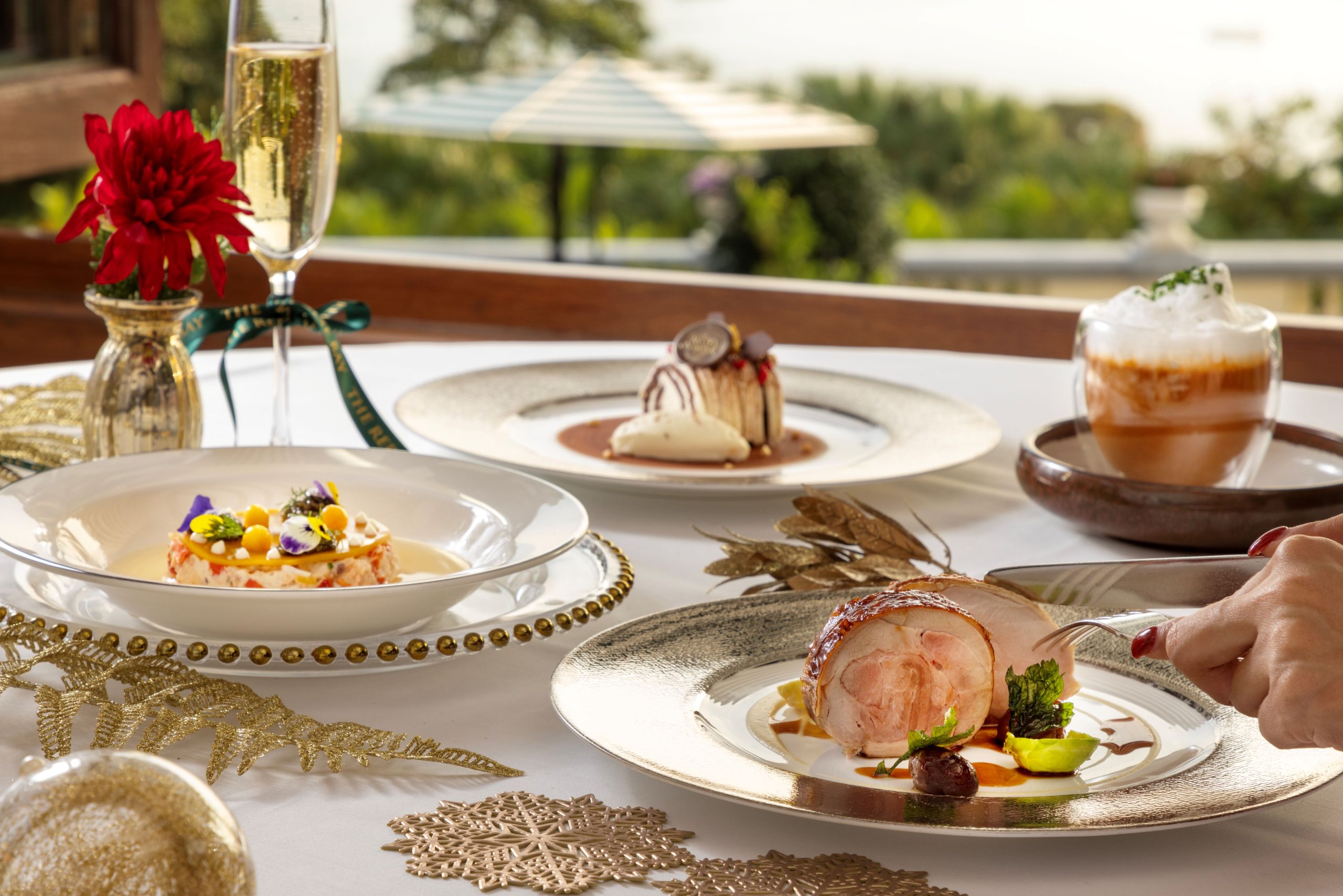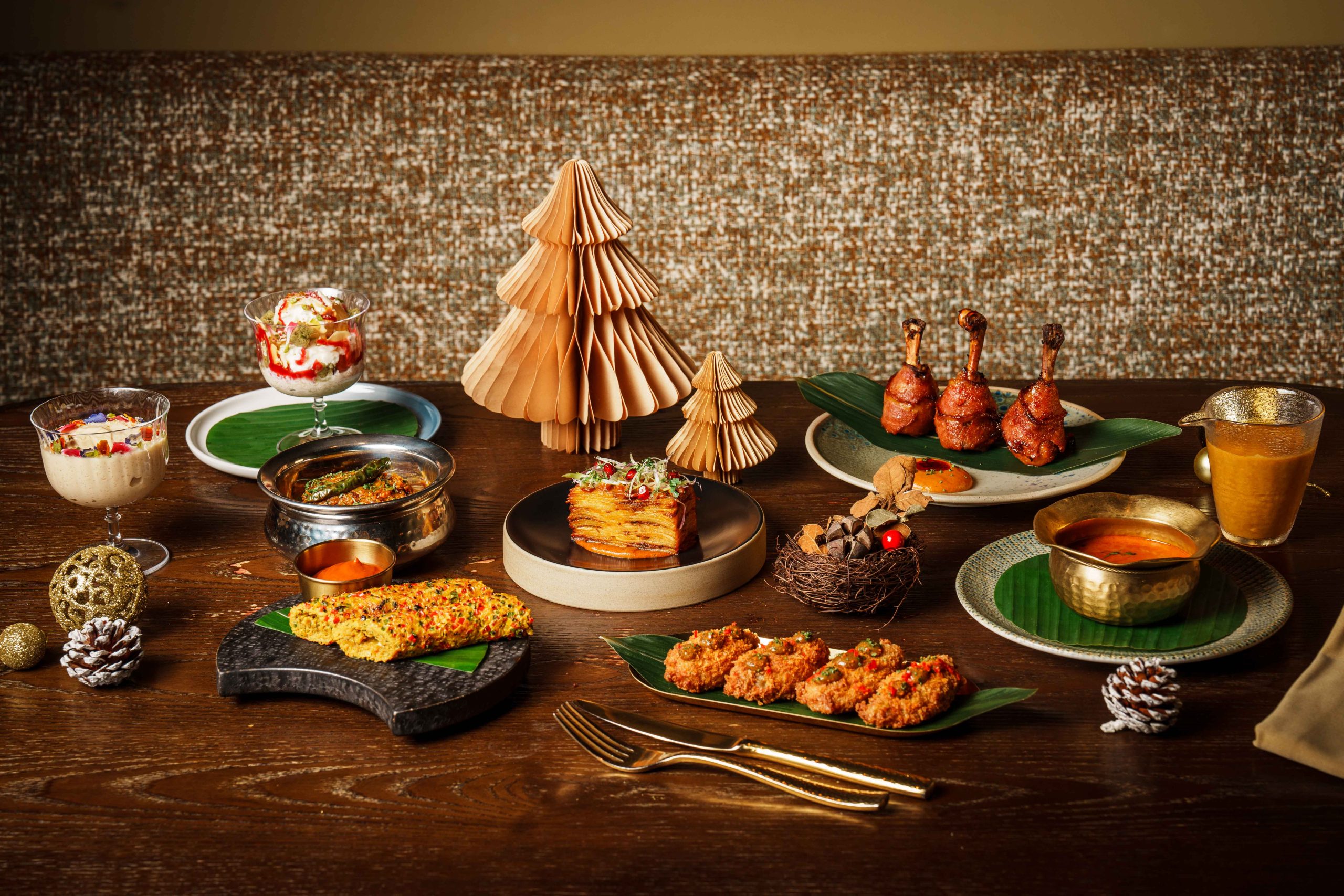
Standing in front of French painter Bernard Buffet’s vivid canvas La Mort 8, one of his last works before the artist’s gruesome suicide, is a humbling, haunting experience. With a triumphant yet tragic career behind him, one afternoon in October 1999, at the age of 71, Buffet found a quiet corner of his castle in Provence, pulled a black plastic bag over his head, wrapped cord around it and suffocated himself. The dynamic work – a skeleton dressed in an Elizabethan ruff and snazzy coloured cape, with four birds, one caged, perched threateningly on his limbs – is a study in attraction and revulsion, a damning and dazzling testament to the life and work of this celebrated yet misunderstood artist.
Buffet, long denied a place in the art establishment, is back, with exhibitions at Sotheby’s S|2 gallery in Hong Kong and the Musée d’Art Moderne de la Ville de Paris in France. His moment has come – again. Buffet’s may not be a household name except to the French, for whom his melancholic, austere works with their crisp lines, technical skill and the artist’s striking arachnid signature, once compared to a praying mantis, are as recognisable as those of Pablo Picasso or Andy Warhol.

Buffet became the first megastar of art in the modern age – and, in the process, made a million – in the 1950s, when he was in his twenties. In 1949 he met and began an intense, eight-year relationship with industrialist and art patron Pierre Bergé, until, in a remarkable dismissal, Bergé dumped him for then up-and-coming designer Yves Saint Laurent on the occasion of fellow designer Christian Dior’s funeral.
By that time Buffet, a young man with movie-star looks and sartorial snap to match, had been voted one of the world’s two most important artists by Parisian art critics. The other was Picasso. Buffet was a commercial success, owned a chauffeur-driven Rolls-Royce Silver Wraith and was married to Annabel Schwob de Lure, a beautiful model and muse to several Parisian artists, who had a relationship with Françoise Sagan. So you might imagine Buffet should have gone on to become one of the most kinetic figures in art history and the subject of numerous films.
But Buffet’s life, like his work, was awash with conflict and tension, and his star fell just as rapidly as it had risen. The artist was publicly shunned and ridiculed by figures such as Picasso and the French minister of culture at the time, the novelist André Malraux. Buffet’s decline from his monumental status was exacerbated by the end of his relationship with Bergé.
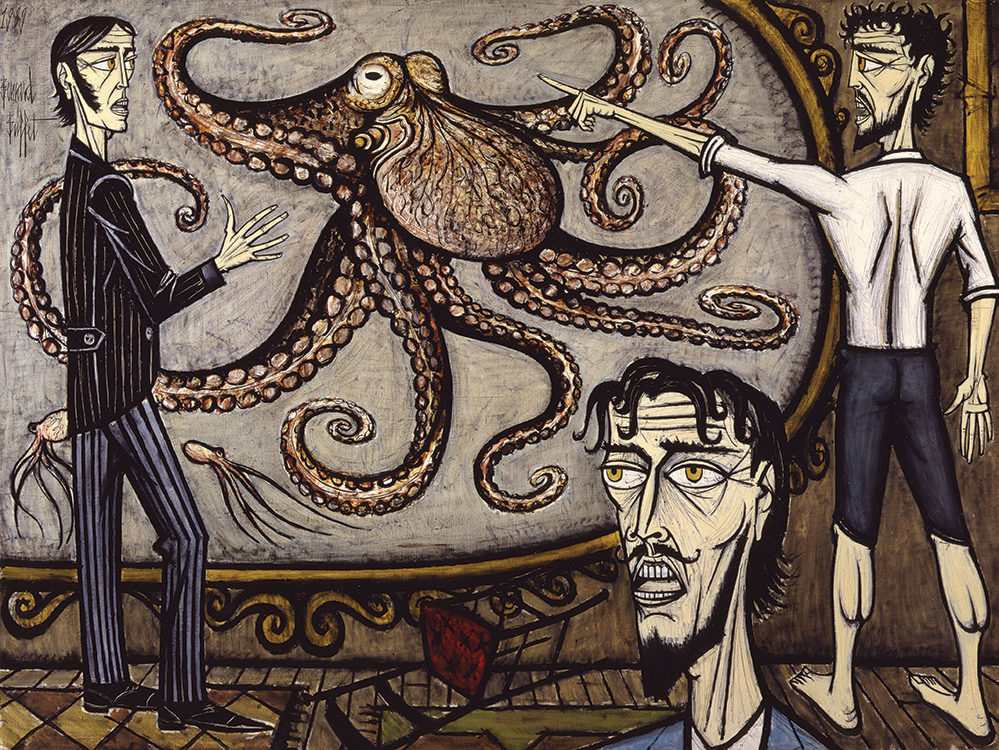
The artist’s reputation in France was marred by the criticism that he over-produced over-commercial work, so betraying his artistic talent. Even so, his tightrope walk along the fine line between kitsch and a darker side of the quotidian meant he kept producing edgy masterpieces right up to the end.
Buffet was born in Paris in 1928. His formative years were spent in the city during the German occupation in World War II. He witnessed bleak times for his country and the deaths of many friends. A post-war tour of France with his mother, the only relative he was close to, was meant to be reinvigorating, but it took a tragic turn when a tumour killed her. At what should have been the time of greatest hope, everything in Buffet’s world came crashing down in a wash of disillusionment.
Buffet took to art. He enrolled at the Académie des Beaux-Arts at the age of 15 and had his first show while he was still in his teens. The artist expressed his sorrow in stark, austere paintings with a crispness of line and dynamic technique that belied the darkness of their content. His work won over the critics and public alike. Buffet captured the Parisian zeitgeist. His style blazed a new artistic trail. The first of his paintings to be shown was hung in the Galerie Beaux-Arts in 1946, and others appeared in the Musée National d’Art Moderne the following year.
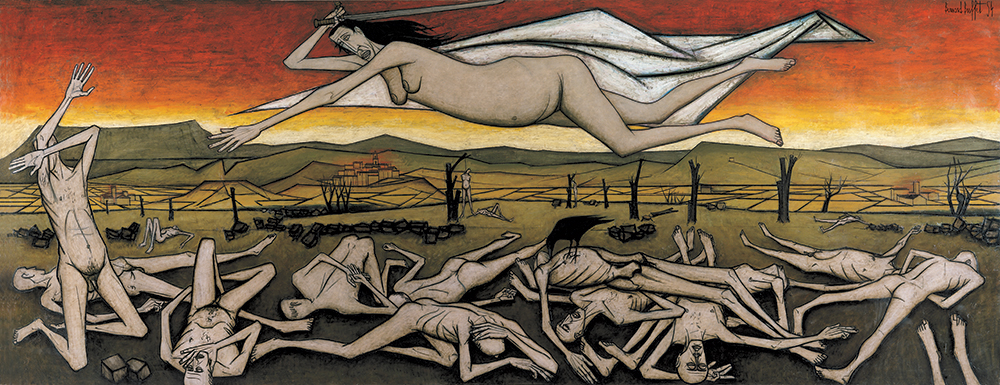
In 1948 Buffet presented a work which immediately won him the Parisian art critics prize: two male figures in a sparse room, both nude, one on one side of the painting with his shorts pulled down, and the other sitting in a dining chair. In an art world that was shifting towards social realism, his brushwork was considered so expressive and the texture of his paint on the canvas was so thick that it overshadowed all else on view. Fame had arrived.
“His artwork became so iconographic and pervasive throughout France, to the point where seemingly everywhere you would encounter a print or painting by the artist,” Sotheby’s curator Scott Niichel says. Such was Buffet’s popularity that he illustrated books by Jean Giono and Jean Cocteau, among others, and designed ballet sets for Roland Petit. In 1958 his portrait of Charles de Gaulle adorned the cover of Time magazine, and a retrospective in Paris of 150 of his paintings, arranged by the Galerie Charpentier, was a triumph. More than 100,000 people paid to see the show and be stunned by the integrity and morbidity of Buffet’s tragic paintings, which included his epic, The Angel of Death, often called Buffet’s Guernica.
The head of French luxuries conglomerate LVMH, Bernard Arnault, once described Buffet as the link between Picasso and Warhol. The French artist was certainly their equal in terms of output, but he was influenced by the old masters such as Géricault, Delacroix, Degas, Gros and Courbet. Buffet was an infallible painting machine. There was never a preparatory sketch. With unearthly precision, he painted direct onto the canvas. The magic wand that effected the transformation of Buffet from poor adolescent to wealthy artist was his paintbrush. He painted for four or five hours a day, every day of his life. He once said of his work: “Painting: one doesn’t talk about it, one doesn’t analyse it, one feels it.”
The artist’s influential supporters ranged from old ladies belonging to the upper crust to intellectuals such as the poet and critic Louis Aragon and Cocteau, both of whom had also championed the work of Picasso. Comparing Picasso and Buffet was the stock in trade of the francophone art world in the late 1950s. Buffet represented France at the Venice Biennale, and he topped a poll to find the most admired painter in France. In the 1970s, Warhol called Buffet the “greatest artist living”.
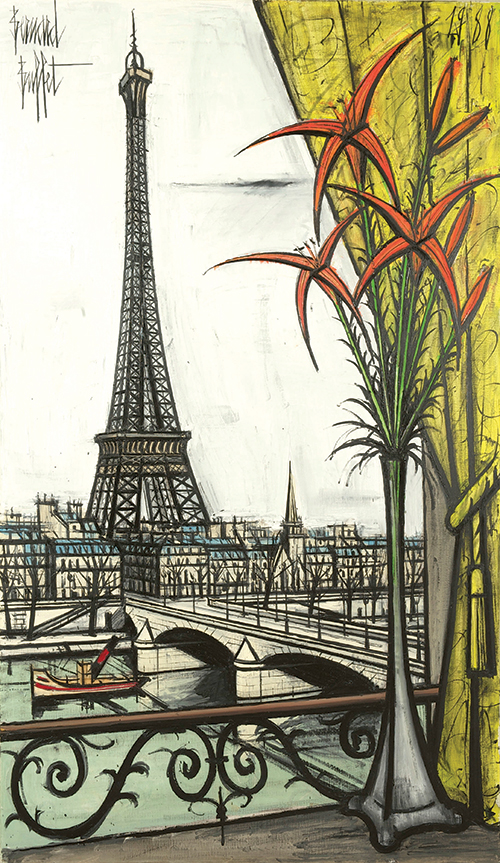
“I think society turned on Buffet, or, at least, art critics and curators turned on him, in no small part because his art had initially been thought of as an expression of post-war French tragedy, and capturing a certain disillusionment people were feeling,” Niichel says. “But when he became such a profoundly wealthy superstar and celebrity at such a young age, his lifestyle was suddenly at odds with what was perceived by people in the artwork that he produced.” The dealer that represented Buffet for most of the artist’s career was Maurice Garnier. “What was good for Andy Warhol 20 years later was very bad for Bernard Buffet,” Garnier said.
The expectation in Paris was that Buffet would be to art in the second half of the 20th century what Picasso had been to art in the first half. Many of Buffet’s early works reminded Parisians of Picasso, paticularly his references to hens, chickens and clowns. But the Spanish artist quickly came to resent his French counterpart, accusing Buffet of “stealing my sun”. Famously, Picasso was dining with his son and daughter one day in Cannes when his children spotted Buffet at another table. So excited were they by his presence, they went over and asked for the French painter’s autograph. Picasso was livid.
Garnier recalled another occasion: “I once saw Picasso in my gallery on the Rue de Seine in 1950. He came in because opposite the door was hanging a picture by Bernard Buffet, Femme au Poulet,” The work, from 1947, depicts a chicken flapping its wings and kicking its legs as a woman holds it by the neck. “Picasso planted himself in front of the picture, hands on hips, and stayed there for three minutes, then he turned and left. He did not look at a single other picture, just that one,” Garnier said.
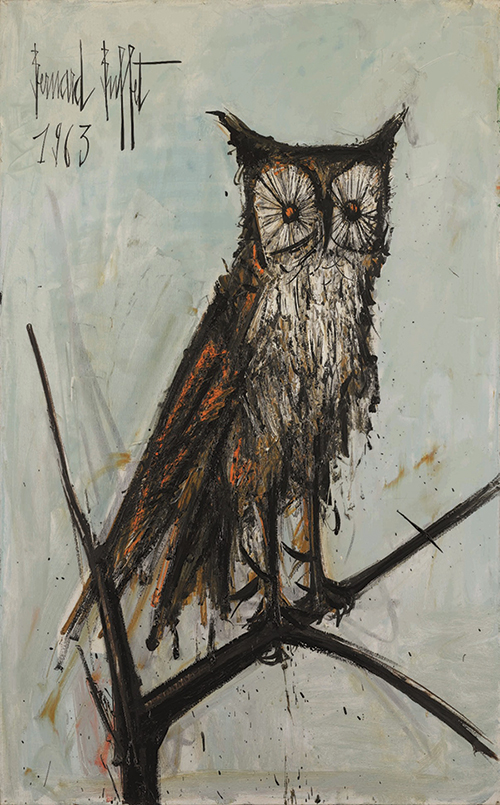
Buffet’s later life, when he was largely ignored by the art establishment, took a turn for the worse when he discovered he had Parkinson’s Disease, which impaired his ability to paint – and eventually drove him to suicide. In the catalogue of the exhibition of Buffet’s work in Paris, Bergé, breaking his usual silence on the subject of Buffet, writes: “Cocteau said that a painter is always creating his autobiography, whether he/she is seeing through landscape, or flowers, or food and vegetables. This is particularly true for Buffet. He was his painting. Those hanging chickens with cords, it’s him. Those sad, ugly fish, it’s him. The plants that lost their leaves because of the wind, that’s him. The Angel of Death flying over destroyed fields is also him. To me, Bernard Buffet looked like Rimbaud. That’s the image I will keep of him. A skinny boy, with grey eyes and empty, sallow cheeks, who had just come out of the war and was about to enter the glory.”
To anybody that looks at La Mort 8 and responds emotionally, it’s clear that Buffet’s glory never left him. Those tantalising lines, the thrilling depth of paint – which feel like the work of a rising young talent – and the legend of the artist, are rightfully about to be rediscovered.


